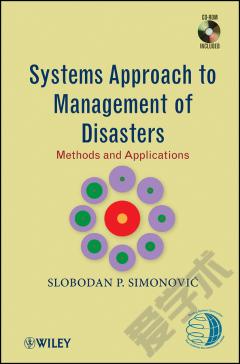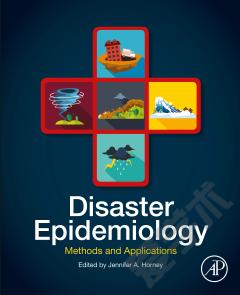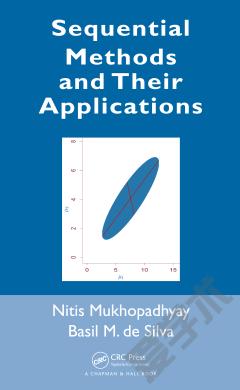Systems Approach to Management of Disasters —— Methods and Applications
----- 疾病管理系统途径:方法与应用
List of Figures and Tables. About the Author. Foreword. Preface. List of Acronyms and Abbreviations. I MANAGEMENT OF DISASTERS. 1 Introduction. 1.1 Issues in Management of Disasters Personal Experience. 1.1.1 Red River Flooding. 1.1.2 "Red River Flood of the Century," Manitoba, Canada. 1.2 Tools for Management of Disasters Two New Paradigms. 1.2.1 The Complexity Paradigm. 1.2.2 The Uncertainty Paradigm. 1.3 Conclusions. References. Exercises. 2 Integrated Disaster Management. 2.1 Definition. 2.2 Integrated Disaster Management Activities. 2.2.1 Mitigation. 2.2.2 Preparedness. 2.2.3 Response. 2.2.4 Recovery. 2.3 Disaster Management in Canada Brief Overview. 2.3.1 Emergency Management Act. 2.3.2 National Disaster Mitigation Strategy. 2.3.3 Joint Emergency Preparedness Program. 2.3.4 Emergency Response. 2.3.5 The Role of Federal Government in Disaster Recovery. 2.4 Decision Making and Integrated Disaster Management. 2.4.1 Individual Decision Making. 2.4.2 Decision Making in Organizations. 2.4.3 Decision Making in Government. 2.5 Systems View of Integrated Disaster Management. References. Exercises. II SYSTEMS ANALYSIS FOR INTEGRATED MANAGEMENT OF DISASTERS. 3 Systems Thinking and Integrated Disaster Management. 3.1 System Definitions. 3.1.1 What is a System? 3.1.2 Systems Thinking. 3.1.3 Systems Analysis. 3.1.4 The Systems Approach. 3.1.5 Systems "Engineering". 3.1.6 Feedback. 3.1.7 Mathematical Modeling. 3.1.8 A Classification of Systems. 3.1.9 A Classification of Mathematical Models. 3.2 Systems View of Integrated Disaster Management. 3.2.1 A Systems Typology in Integrated Disaster Management. 3.2.2 Systems View of Disaster Management. 3.2.3 Systems View of Disaster Management Activities. 3.3 System Formulation Examples. 3.3.1 Dynamics of Epidemics. 3.3.2 Shortest Supply Route. 3.3.3 Resources Allocation. References. Exercises. 4 Introduction to Methods and Tools for a Systems Approach to Management of Disaster. 4.1 Simulation. 4.2 System Dynamics Simulation. 4.3 Optimization. 4.4 Multiobjective Analysis. 4.5 Disaster Risk Management. 4.5.1 Sources of Uncertainty. 4.5.2 Conceptual Risk Definitions. 4.5.3 Probabilistic Approach. 4.5.4 A Fuzzy Set Approach. 4.6 Computer Support: Decision Support Systems. References. Exercises. III IMPLEMENTATION OF SYSTEMS ANALYSIS TO MANAGEMENT OF DISASTERS. 5 Simulation. 5.1 Definitions. 5.2 System Dynamics Simulation. 5.2.1 Introduction. 5.2.2 System Structure and Patterns of Behavior. 5.3 System Dynamics Simulation Modeling Process. 5.3.1 Causal Loop Diagram. 5.3.2 Stock and Flow Diagram. 5.3.3 Generic Principles of System Dynamics Simulation Modeling. 5.3.4 Numerical Simulation. 5.3.5 Policy Design and Evaluation Model Use. 5.4 System Dynamics Simulation Modeling Examples. 5.4.1 A Simple Flu Epidemic Model. 5.4.2 A More Complex Flu Epidemic Model with Recovery. 5.5 An Example of Disaster Management Simulation Flood Evacuation Simulation Model. 5.5.1 Introduction. 5.5.2 Human Behavior During Disasters. 5.5.3 A System Dynamics Simulation Model. 5.5.4 Application of the Evacuation Model to the Analyses of Flood Emergency Procedures in the Red River Basin, Manitoba, Canada. 5.5.5 Conclusions. References. Exercises. 6 Optimization. 6.1 Linear Programming. 6.1.1 Formulation of Linear Optimization Models. 6.1.2 Algebraic Representations of Linear Optimization Models. 6.2 The Simplex Method for Solving Linear Programs. 6.2.1 Completeness of the Simplex Algorithm. 6.2.2 The Big M Method. 6.3 Duality in LP. 6.3.1 Sensitivity Analysis. 6.4 Special Types of LP Problems Transportation Problem. 6.4.1 Formulation of the Transportation Problem. 6.4.2 Solution of the Transportation Problem. 6.5 Special Types of LP Problems Network Problems. 6.5.1 The Shortest Path Problem. 6.5.2 The Minimum Spanning Tree Problem. 6.5.3 The Maximum Flow Problem. 6.6 An Example of Disaster Management Optimization The Optimal Placement of Casualty Evacuation Assets. 6.6.1 Introduction. 6.6.2 The OPTEVAC Model. 6.6.3 A Casualty Evacuation Example. 6.6.4 Summary. References. Exercises. 7 Multiobjective Analysis. 7.1 Introduction. 7.1.1 Toward Operational Framework for Multiobjective Analysis. 7.1.2 An Illustrative Example. 7.2 Multiobjective Analysis Methodology. 7.2.1 Change of Concept. 7.2.2 Nondominated Solutions. 7.2.3 Participation of Decision Makers. 7.2.4 Classification of Multiobjective Techniques. 7.2.5 Disaster Management Applications. 7.3 The Weighting Method. 7.4 The Compromise Programming Method. 7.4.1 Compromise Programming. 7.4.2 Some Practical Recommendations. 7.4.3 The COMPRO Computer Program. 7.5 An Example of Disaster Management Multiobjective Analysis Selection of Flood Management Alternative. 7.5.1 Preparation of Input Data. 7.5.2 Solution of Flood Management Problem Using Compromise Programming. 7.5.3 Summary. References. Exercises. IV BE PREPARED. 8 A View Ahead. 8.1 Issues in Future Disaster Management. 8.1.1 Climate Change. 8.1.2 Population Growth and Migrations. 8.2 A Systems View. References. Index.
{{comment.content}}








 京公网安备 11010802027623号
京公网安备 11010802027623号